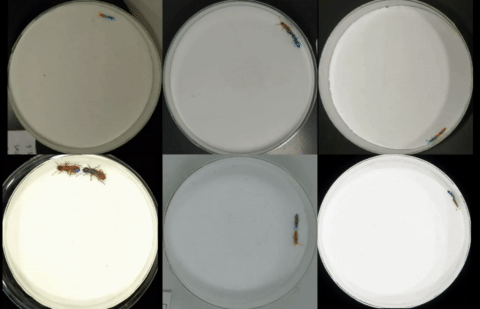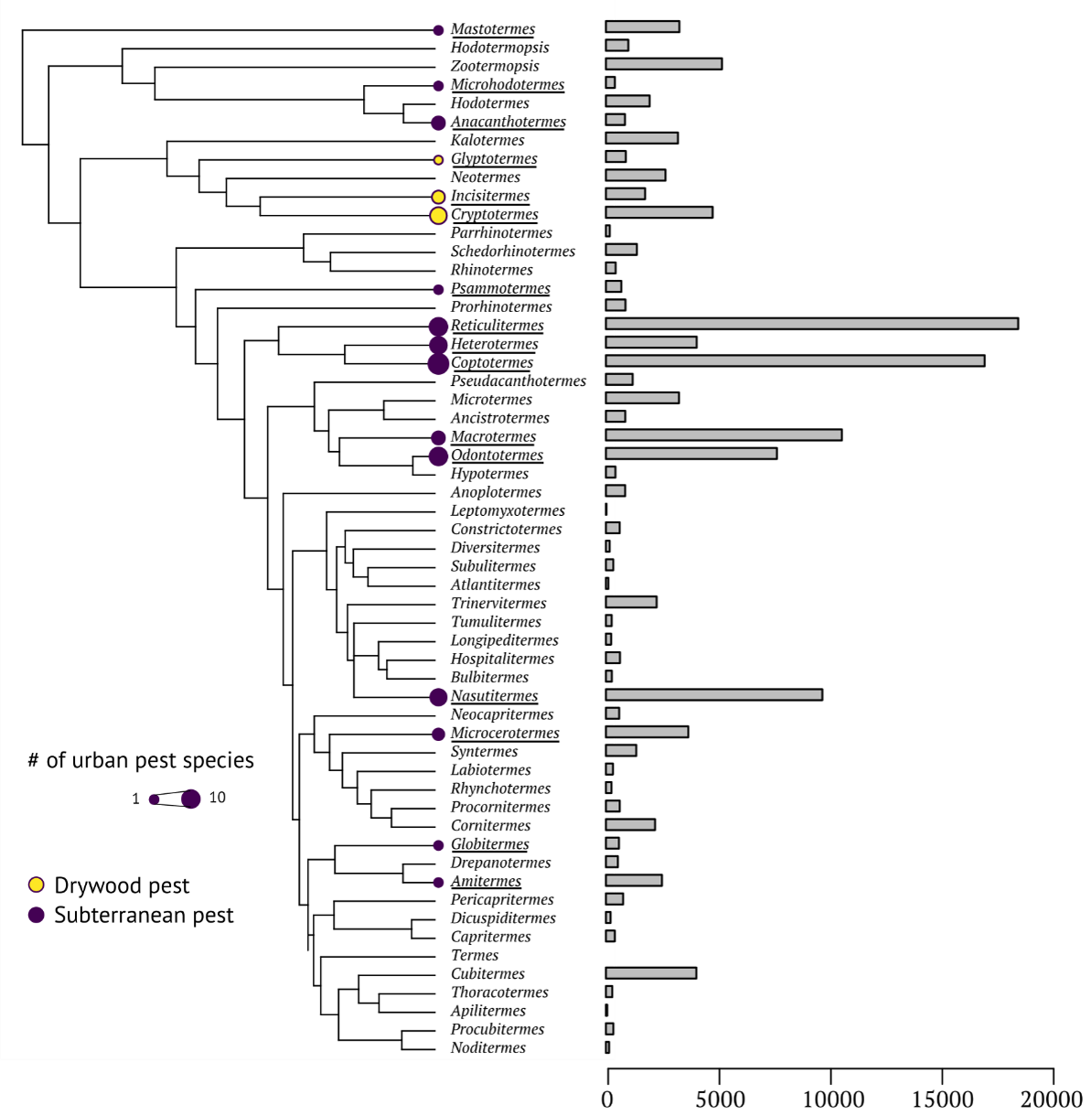Research
Our research aims to explain why animals (termites) behave in the way you observed, from all four different approach, mechanism, development, function, and evolutionary history. We put special focus on the last component. Some example projects are below (for a full list of publications, see Publication).
Evolutionary history of tandem running behavior
Tandem running is the simplest collective behavior. In termites, a pair of a female and a male coordinate their motion while exploring the environments. Leader females and follower males play their own roles to maintain coordination. Even this simple behavior holds a great diversity of behavioral rules across phylogeny of termites and between closely related species. We try to expand to idea of simple tandem runs to more complex collective motion by a large group. We also study ant tandem runs.
— Click here to learn more.
Comparative analysis of termtie building structures
](/images/output.gif)
The structures built by social insects vary widely in pattern and complexity. How do these variations arise from individual behavior? Nest structures function at the group level, but these structures are outcomes of individual behavior. Thus, one needs to know the mechanical relationship between individual behavior and group-level structures. We compare termite tunneling behavior across all termite lineages to trace back the evolution.
Evolutionary origin of termite behaviors
There are more than 3,000 termite species in this world, but only handful species are counted as destructive pest. What is the important traits that destinates them as pests among others? Using literature survey, we compile the comprehensive comparative datasets of termite evolution (e.g., body size from 1,638 species, association with termitophilous rove beetles and colony size of 122 species, shelter-tube construction and nesting behavior, mating behavior of 72 species). We are further developing a database comprehending all termite species with biological information, and produce behavioral/physiological/morphological data from living termties.
— Click here to learn more.
Fossil behavior
It is challenging to understand how collective behavior has evolved to its current form because inter-individual communication leaves only scarce fossil records. However, some insight can be gained from fossilized groups of animals, as a snapshot of a dynamic process of movement coordination. We keep looking for the oppotunity to analyze fossil from behavioral perspectives, even including comparisons with current living species. See termite tandem fossil and fish school fossil.



